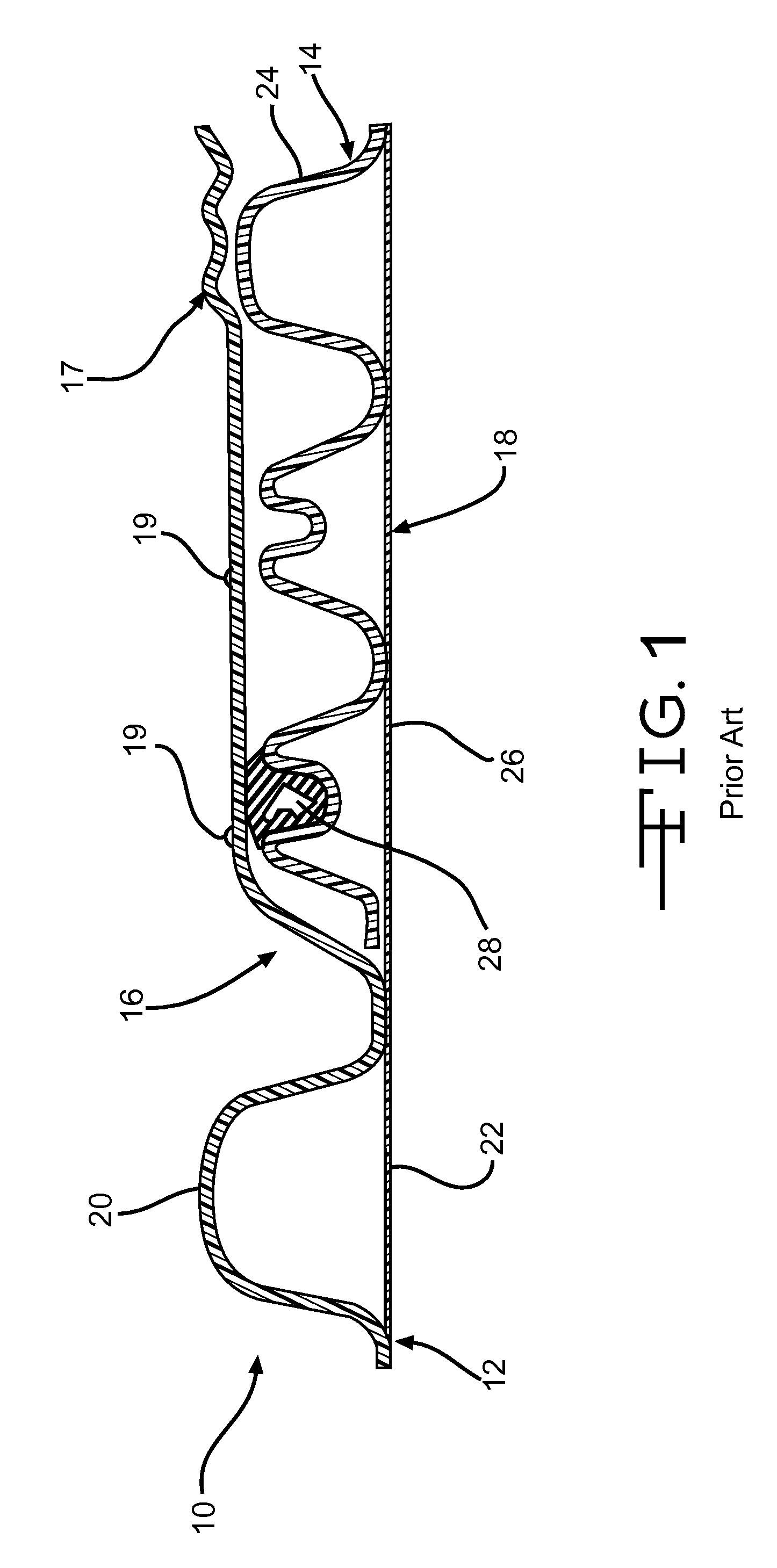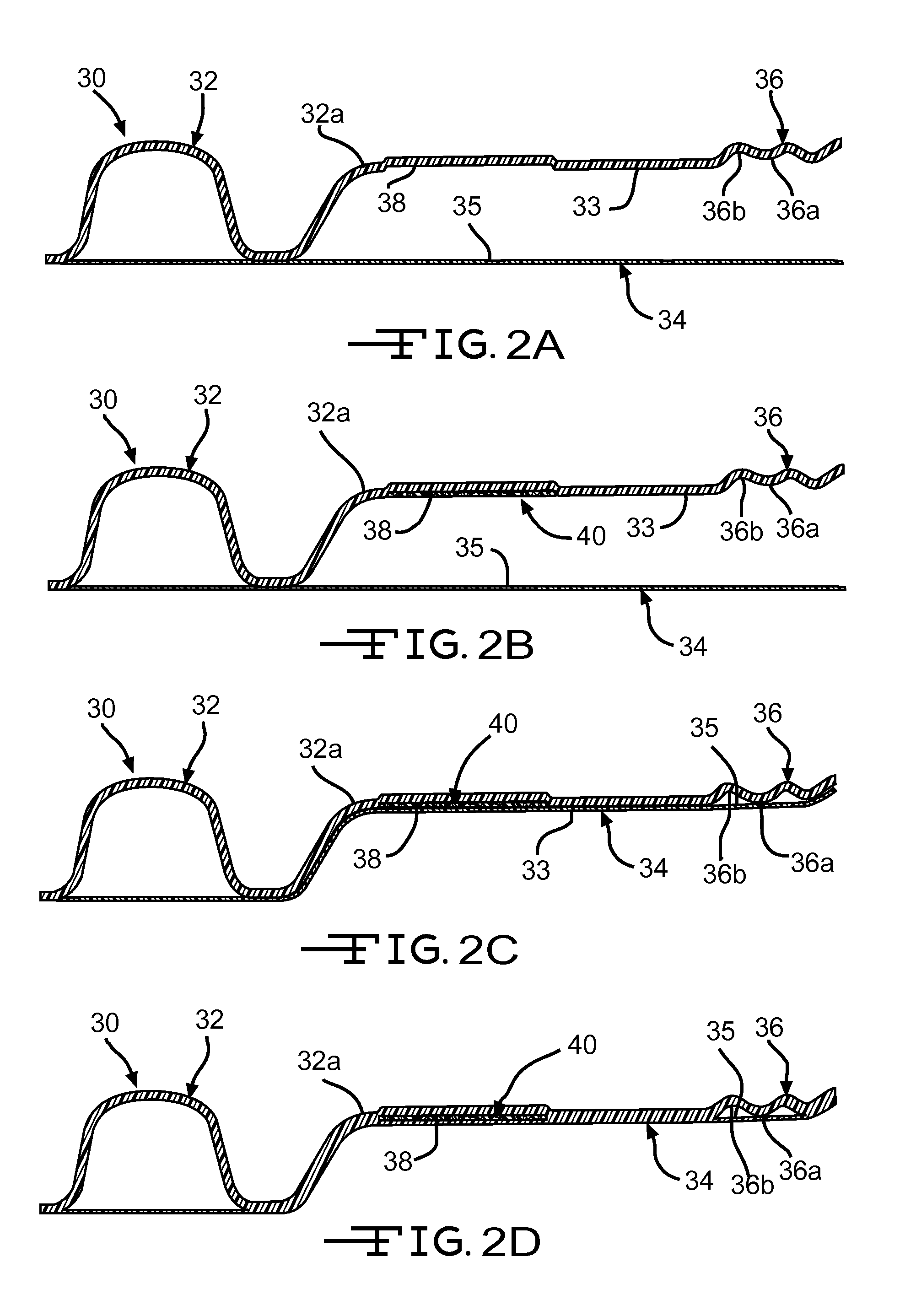Plastic pipe with bell
a plastic pipe and bell technology, applied in the field of plastic pipe bell design, can solve the problems of slow pipe extrusion process, complicated process, slow pipe extrusion speed of corrugator, etc., and achieve the effects of reducing deformation, increasing hoop or circumferential stiffness, and high strength
- Summary
- Abstract
- Description
- Claims
- Application Information
AI Technical Summary
Benefits of technology
Problems solved by technology
Method used
Image
Examples
Embodiment Construction
[0019]FIG. 1 shows a typical multi-layer extruded plastic pipe bell and spigot joint 10. The watertight joint is formed from two pipe sections 12, 14 having a bell 16 and spigot 18, respectively. Bell pipe 12 includes an outer shell 20 and an inner liner 22. A bell 16 is formed from the outer shell extrusion layer. The bell 16 includes annular stiffening ribs 17 near the pipe end to maintain roundness. The bell 16 also includes annular stiffening ribs 19 on its outer surface which are relatively small to avoid deforming the inner surface of the bell. Spigot pipe 14 includes an outer shell 24 and an inner liner 26. A hollow polyisoprene or thermoplastic elastomer gasket 28 provides a watertight seal between the bell 16 and the spigot 18. When assembled, the inner liners 22 and 26 preferably abut to provide a smooth inner surface, but this is not essential for most applications.
[0020]Referring to FIG. 2A, a two-layer corrugated pipe 30 having an outer layer 32 fused to an inner liner ...
PUM
| Property | Measurement | Unit |
|---|---|---|
| thickness | aaaaa | aaaaa |
| thickness | aaaaa | aaaaa |
| diameter | aaaaa | aaaaa |
Abstract
Description
Claims
Application Information
 Login to View More
Login to View More - R&D
- Intellectual Property
- Life Sciences
- Materials
- Tech Scout
- Unparalleled Data Quality
- Higher Quality Content
- 60% Fewer Hallucinations
Browse by: Latest US Patents, China's latest patents, Technical Efficacy Thesaurus, Application Domain, Technology Topic, Popular Technical Reports.
© 2025 PatSnap. All rights reserved.Legal|Privacy policy|Modern Slavery Act Transparency Statement|Sitemap|About US| Contact US: help@patsnap.com



